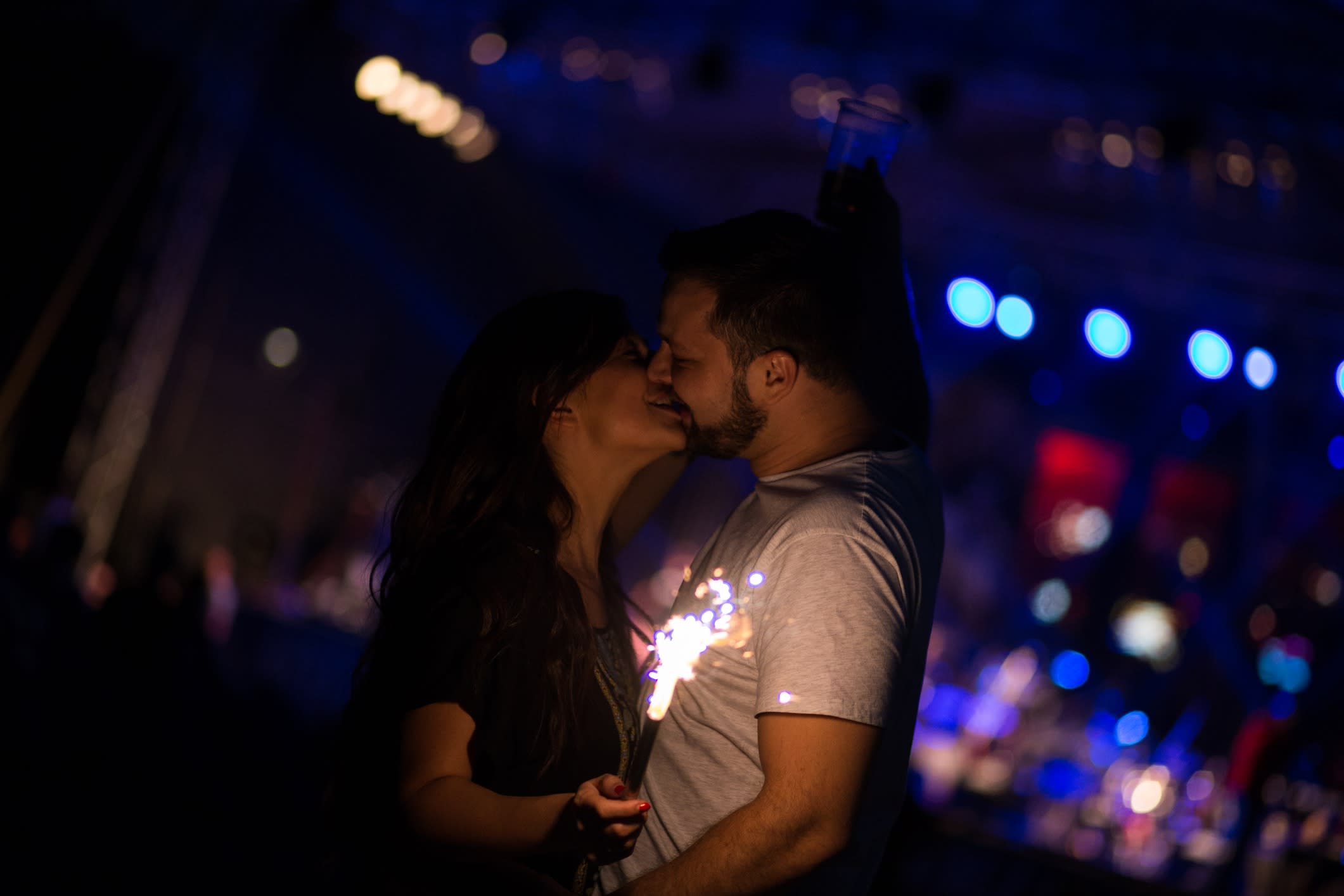Kiss cams, concerts, and consent: Rethinking privacy torts in the age of viral exposure
The viral video from a Coldplay concert held at a major stadium in Massachusetts has sparked widespread discussion, though not just for the music. The clip, captured during a “kiss cam” moment, features a man and a woman swaying closely to the music before noticeably pulling apart when the camera focuses on them.
The moment quickly gained traction online, with social media users speculating about the relationship between the two.
The concert took place on 16 July, and the video has since amassed more than 23 million views on TikTok.
During the performance, Coldplay’s frontman jokingly remarked on the couple, saying:
“Look at these two. Either they’re having an affair or they’re just very shy,” drawing laughter from the audience.
Coldplay kiss: Nobody should expect to go to a huge concert and expect privacy, but the incident is a jarring reminder of the reach of the surveillance state and the internet’s insatiable appetite for public shaming https://t.co/mNfIn3I6CI
— LawNewsIndex.com (@TheLawMap) July 22, 2025
Internet sleuths soon attempted to identify the pair, sparking debates on privacy, digital surveillance, and the implications of viral fame, especially when personal and professional lives intersect in unexpected ways.
The “kiss cam,” a staple of North American sports entertainment where a camera pans across the audience in search of couples to spotlight for a kiss, raises important questions of privacy law, particularly within the framework of tort law, constitutional protections (where applicable), and broadcasting rights.
Though generally viewed as a benign or humorous tradition, the practice does potentially implicate privacy rights, depending on context, jurisdiction, and the expectations of those captured on camera.
Privacy in common law jurisdictions (such as the United States, Canada, Australia, and the UK) can be protected under both tort law and, in some contexts, constitutional or quasi-constitutional protections. The extent of protection depends mainly on three things:
- Reasonable expectation of privacy
- Consent
- Public interest.
At the core of privacy law is the notion of a reasonable expectation of privacy.
In Katz v. United States, 389 U.S. 347 (1967), the US Supreme Court held that “the Fourth Amendment protects people, not places”, establishing that privacy expectations can exist even in public settings. However, the threshold is higher for privacy intrusions in public, as individuals typically have diminished expectations.

In the context of a kiss cam, a sole argument can be relied that there is no privacy in stadiums or event venues – as they are public venues where attendees are usually aware of the presence of cameras, and by attending the event, spectators often implicitly consent to being recorded, especially since their images may appear on large screens or be broadcast.
However, implicit consent doesn’t extend to being coerced into romantic acts, which can give rise to claims.
US tort law, following Restatement (Second) of Torts §652B–E, recognises four types of invasion of privacy:
- Intrusion upon seclusion
- Public disclosure of private facts
- Placing a person in a false light
- Appropriation of name or likeness.
When people talk about “invasion of privacy”, they’re usually thinking of what the law calls intrusion upon seclusion. This happens when someone deliberately invades another person’s private space or life in a way that most people would find deeply inappropriate.
Imagine, for instance, someone secretly placing a hidden camera in your bedroom or reading your private messages without permission – such behaviour doesn’t need to be shared with others to be considered a violation; the act itself is enough to cause harm.
However, not all privacy violations are about sneaking into someone’s private life. The law also recognises other forms of privacy invasion that involve making someone’s private information public, often to hurt them or benefit the one doing it.
These forms are more complex because they involve sharing information, so they can sometimes come into conflict with free speech protections.
One example is public disclosure of private facts, which means sharing sensitive information that most people would expect to remain confidential. Picture a creditor putting up a sign outside a shop saying the owner hasn't paid their debts – technically true, but publicly humiliating.
Another category is false light, where someone publishes information that may be partly true but is presented in a misleading way that creates a false and harmful impression. For example, posting a photo of someone outside a rehab centre with a caption implying they are a patient, when they were only visiting a friend, can unfairly tarnish their reputation.
Even though the facts aren't completely false, the way they’re framed is damaging.
Lastly, there's appropriation of name or likeness, which happens when someone uses your identity – such as your name or photo –without your permission, often in advertisements or promotions, to make money or attract attention. Think of a company using your picture in an ad without asking you – that’s using your image for their benefit without your consent.
In each of these situations, the law tries to protect people from being exploited, humiliated or misrepresented – while also balancing the right to free speech.
Now, the question is, which of the above holds against Coldplay or the concert organisers for capturing the “kiss cam” moment?
Definitely, the intrusion upon seclusion tort does not apply as it requires an intentional intrusion into someone’s private space where they have a reasonable expectation of privacy. Kiss cams operate in public venues like stadiums where people are visible to thousands and know cameras are present. Therefore, there’s no seclusion or reasonable expectation of privacy – this tort doesn’t apply.
However, public disclosure of private facts’ is likely to apply. This tort applies when private and sensitive information is disclosed, the disclosure would be highly offensive to a reasonable person, and the information is not of legitimate public concern (that is, not newsworthy).

The romantic relationship between two colleagues – particularly if undisclosed to the public or company – is clearly private. Broadcasting this relationship without consent may lead to professional, reputational, and personal consequences. Even though it happened in a public setting, the nature of the relationship was not publicly known – the kiss cam implied or revealed more than what was voluntarily displayed.
In Shulman v. Group W Productions, 18 Cal. 4th 200 (1998), the California Supreme Court held that even in public settings, individuals can have privacy interests in highly personal content (a rescue helicopter ride, in that case). Analogously, capturing emotionally intimate or coerced moments on the kiss cam could be problematic.
For many people in such positions, being exposed in this manner would be deeply embarrassing or damaging. The event was likely not a matter of public concern unless one of the parties was a public figure and the relationship had wider implications (for example, corporate misconduct).
Additionally, consent is central in the case of portraying images to the public. Although attendees may consent to being filmed as a condition of entry (often in ticket terms), this does not equate to consent to being spotlighted in ways that imply intimate relationships or coerce conduct.
The commercial exploitation of such footage without explicit consent also constitutes an unauthorised appropriation of likeness for profit. The fact that Coldplay’s kiss cam footage has already been repurposed for commercial use only compounds the issue, as it transforms a spontaneous moment into a promotional tool without the necessary safeguards of consent, potentially giving rise to actionable claims under privacy and media laws.
As societal norms evolve regarding consent, intimacy, and digital exposure, so too must the legal and ethical boundaries of public entertainment practices such as the kiss cam.
The transformation of fleeting public moments into unexpected viral content without consent exposes individuals to reputational harm, emotional distress, and professional consequences – often without legal recourse that keeps pace with technology.
In a digital age where virality is unpredictable and content spreads beyond its original context in seconds, it’s no longer sufficient to ask only what is lawful – we must also ask what is just and what is right.
It is time to pose the deeper moral question:
What constitutes privacy in this digital era, where becoming viral is uncontrollable, and does justice truly stand when consent is no longer central to public exposure?
Would Australia’s new privacy tort offer protection?
If a similar kiss cam incident occurred in Australia, would the individuals involved now have a strong legal basis to initiate proceedings under the new statutory tort for serious invasions of privacy, introduced through amendments to the Privacy Act effective 10 June, 2025?
Under this new statutory tort in Australia, an individual can sue if they had a reasonable expectation of privacy, and their privacy was invaded either by intrusion upon seclusion or by the misuse of private information.
In this case, although the kiss cam footage was taken in a public setting (such as a stadium), the context in which the footage is later used – especially in a commercial advertisement implying an intimate relationship between colleagues – may cross the threshold of “misuse of information” that relates to the individual.
However, that is not straightforward. To succeed, the plaintiff still must show that the public interest in protecting their privacy outweighs any countervailing public interest (such as freedom of expression or commercial promotion).
Hence, although the new privacy tort provides a broader legal framework, the public nature of stadiums/concerts, prevalence of implied consent, and difficulty in proving private information misuse may render the statute insufficient to protect plaintiffs in kiss cam-related cases, particularly where the footage is non-explicit, culturally accepted, and lacks demonstrable harm.
What about in Malaysia?
Under current Malaysian law, a plaintiff’s legal avenues for addressing a viral kiss cam incident are extremely limited and unlikely to succeed in court.
While the Federal Constitution, through Article 5(1), has been interpreted to include a right to privacy under “personal liberty”, this right is confined to the public law domain and does not extend to private claims between individuals. Also, attempts to recognise the tort of invasion of privacy have led to conflicting judicial interpretations.
While Malaysia’s cultural dimensions can support a plaintiff’s moral argument and may influence judicial sympathy or damages awarded under related torts (like negligence or defamation), they cannot, by themselves, create a legal cause of action (the tort of invasion of privacy) where one does not exist.






